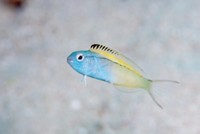Advertisement
Grab your lab coat. Let's get started
Welcome!
Welcome!
Create an account below to get 6 C&EN articles per month, receive newsletters and more - all free.
It seems this is your first time logging in online. Please enter the following information to continue.
As an ACS member you automatically get access to this site. All we need is few more details to create your reading experience.
Not you? Sign in with a different account.
Not you? Sign in with a different account.
ERROR 1
ERROR 1
ERROR 2
ERROR 2
ERROR 2
ERROR 2
ERROR 2
Password and Confirm password must match.
If you have an ACS member number, please enter it here so we can link this account to your membership. (optional)
ERROR 2
ACS values your privacy. By submitting your information, you are gaining access to C&EN and subscribing to our weekly newsletter. We use the information you provide to make your reading experience better, and we will never sell your data to third party members.
Biological Chemistry
Newscripts
Pity The Poor Mosquito, Sunscreen Bug Repellant
by Marc S. Reisch
May 16, 2011
| A version of this story appeared in
Volume 89, Issue 20

I vividly remember reading Franz Kafka’s novella “Metamorphosis” many years ago and being struck by the story of Gregor Samsa, a man who wakes one day to discover that he has become a large insect. I was haunted by the story because it is told from Gregor’s metamorphosed perspective, and I recently got even more of a clue, from a biological system’s perspective, about the STRESSES OF BEING A BUG, specifically a mosquito.
Pity the poor mosquito. Scientists at Ohio State University, Yale University, and the University of Florida do. As the summer months approach and mosquitoes once again get busy, scientists point out that a warm-blooded meal can provide quite a shock to a mosquito’s delicate innards.
It’s already a stressful life for the little female bugger—always looking for a square meal before laying her eggs. She flits about looking for a target and tries to land on prey while avoiding detection. Then she has to pierce the victim’s skin, sip, and skedaddle. One false move and a slap can dispatch the hapless buzzer to oblivion.
But I had never considered the biological stress this cold-blooded creature can experience when partaking in a warm-blooded meal. In research that recently appeared in the Proceedings of the National Academy of Sciences USA (DOI: 10.1073/pnas.1105195108), scientists report that a mosquito’s body temperature can spike from 22 °C to 32 °C within one minute of imbibing its victim’s blood.
And what a lot of stress that can cause! Such a warm drink endangers the integrity of the mosquito’s own proteins and enzymes, upsetting its tummy to the point of putting in jeopardy the eggs a victim’s blood is meant to nourish. “It’s one of those things that, in retrospect, seems obvious—that blood meals might cause a stress like that,” says David L. Denlinger, one of the study’s authors and an entomologist at Ohio State.
Turns out the mosquito, in this case Aedes aegypti, which carries yellow fever, protects her stomach from the rapid increase in body temperature by producing heat shock protein 70 (Hsp70). “Our own bodies make these proteins when we have a fever,” Denlinger explains. They help maintain the integrity of enzymes and proteins when temperatures rise suddenly.
But the scientists’ and my own sympathy for the mosquito goes only so far. The research team has already thought about ways to use this knowledge to reduce mosquito populations when swatting alone just won’t do. By suppressing expression of the protein, scientists can impede the mosquito’s ability to digest a blood meal and thus reduce egg production.
Culex pipiens and Anopheles gambiae, mosquito carriers of West Nile virus and malaria, respectively, also respond to a hot drink with an increase in Hsp70 levels. So interference with Hsp70 production could also limit their reproduction, according to the research team. I say, go for it: The fewer mosquitoes around, the better.

Of course, other methods exist to keep heat-seeking mosquitoes from feeding on humans and passing on disease. I use insect repellants and cover my bare skin as much as I can. But specialists at Saltigo, the fine chemicals subsidiary of Lanxess, say I can safely bare my body and still be mosquito-free.
They’ve recently formulated their Saltidin insect repellant with ULTRAVIOLET LIGHT FILTERS, giving the product a sun protection factor of 15. The firm claims the formulation is ideal for use in cosmetic products for the whole family. As a bonus, Saltidin, which is 1-(1-methylpropoxycarbonyl)-2-(2-hydroxyethyl)piperidine (also known as icaridin), fends off ants and cockroaches, too.




Join the conversation
Contact the reporter
Submit a Letter to the Editor for publication
Engage with us on Twitter